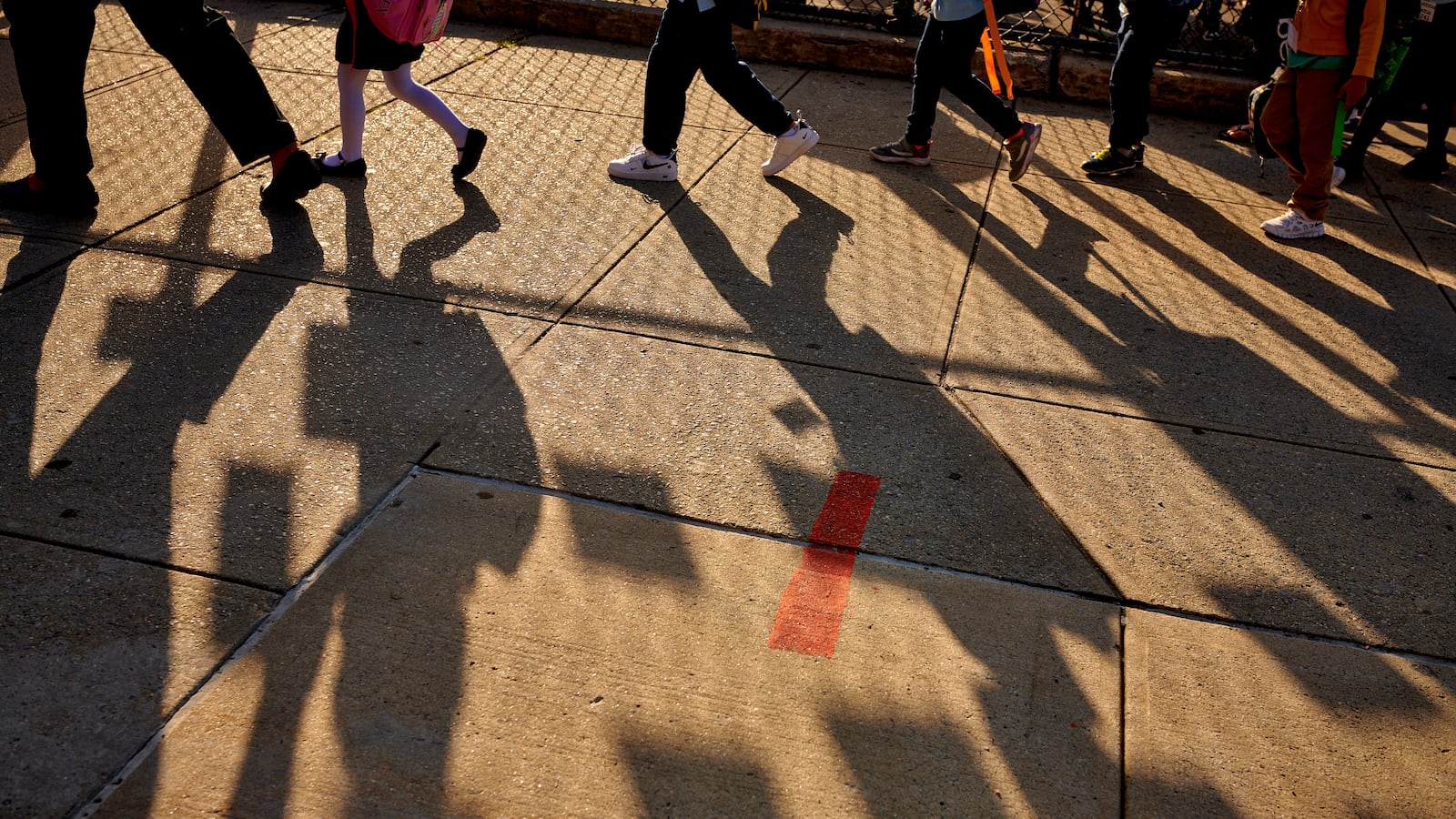This is my last week at Chalkbeat.
Since joining our then-nascent national team in 2017, I’ve written hundreds of stories about many topics — the often derailed ambitions of presidential administrations and educational philanthropies, the flawed way we rate schools, the initial and then lingering consequences of the pandemic, and a stream of interesting research studies. (Fortunately, I’ll still be reporting on K-12 education, soon at the Wall Street Journal.)
I’ve learned an incredible amount, most of which I’ve tried to communicate in my published stories. But as journalists, we rarely get a chance to reflect on the broader takeaways from our reporting. So I thought I’d use my last week to do so.
Education issues usually aren’t federal, but often are national
Because U.S. schools are so decentralized, covering national education issues can be tough. There are nearly 100,000 public schools, over 19,000 school districts, and 50 states. That’s where most of the important decisions about education are made.
We do have a U.S. Department of Education, but at the moment that’s not where the action is. The policy agendas of both presidential administrations I’ve covered, Trump and Biden, mostly did not or have not come to fruition.

But that doesn’t mean there is no national education story. I’ve learned that what is happening in one school is often happening in many others, all across the country.
There has been, for instance, a rise in teacher turnover since the pandemic in a pattern that has been strikingly similar in different places. Schools almost everywhere have seen a rise in chronic absenteeism, too. Before the pandemic, most states experienced stagnant or declining test scores.
National policies also have a way of trickling down into classrooms, even without any national edicts. Two recent examples: The science of reading and high-dosage tutoring are education ideas that have been embraced, at least in rhetoric, across the country.
Now, whether these big ideas end up working as intended is another story, one that reflects a different tendency in education: The way that policies can get muddled in the game of telephone from idea to implementation.
Research is valuable, but it can’t simply be “followed”
I’ve spent a lot of time covering education data and research, which means talking to researchers frequently. Sometimes they lament to me that cutting-edge research about what works in education is not being heeded by educators or politicians.
I get the sentiment, but I’ve also come to realize that research can’t dictate school policies. That’s because education is shaped by values, priorities, politics, costs, and local context. A research study can help us understand what might work to improve some outcome, usually student test scores. But it can’t, on its own, say whether a school should adopt a given policy. Parents, teachers, and politicians might care about something other than test scores, they might object to a policy for political reasons, or they might find the policy difficult or too costly to implement.
Plus research itself is often complicated, context-specific, contested, and sometimes quite limited. To name one example: Despite many studies on the topic, researchers still don’t have a clear answer on whether holding students back a grade is worthwhile.
I still earnestly believe that research can help improve schools, but I’m also more aware of its limitations.
Parents look at schools differently than journalists and pundits
Education journalists and others who write about schools are often surprised to learn that parents typically rate their own child’s school as good or great.
This contrasts with how we as journalists approach covering education — we tend to focus on highlighting problems and holding people accountable. Indeed, the American public gives schools writ large mediocre grades, which may reflect how journalists and others write about them.
I like to think of this as the parent–pundit divide. Once you’re looking for it, you’ll see it everywhere. For all sorts of reasons — geographic, educational, political, professional — pundits often have different perspectives about schools than most parents and others involved in education.
Another example is the four-day school week, which is derided by pundits as an ill-conceived idea that hurts students. (And indeed research suggests shorter school weeks are harmful to learning.) Yet four-day weeks are widely popular with parents and teachers in districts that have adopted it.
There is good reason for journalists and others to focus on problems in the system, and I’ve done so in my own reporting. But I think those of us who write about education should be cognizant of this disconnect.
History rhymes with the present
Our high school history teachers were right: History repeats itself or as some historians like to say, it “rhymes.” After dabbling in historical research myself and reading compelling histories written by education journalists, I’m convinced that all of the history-teacher cliches are true in education policy.
Consider the recent experiment in sending a boatload of COVID relief money to schools in a bid to make up for learning loss. We shouldn’t be surprised how this has played out, because there was a strikingly similar experience in the late 1960s after the enactment of Title I, which provides federal funds for high-poverty schools.
In both cases, there were high expectations: the money was supposed to solve poverty in the ‘60s and fix learning loss now. That was quickly followed by disillusionment after the problems weren’t solved. Poverty persisted then and learning loss persists now. In both cases, there were complaints about how the money was tracked and spent, sometimes based on eye-catching but unusual examples: like Olympic-sized swimming pools then and a new football field now.
This also reflects a historical pattern in education, identified in journalist Dana Goldstein’s book “The Teacher Wars:” The hype-disillusionment cycle. This tendency means to swing wildly from hope that a policy will be a silver bullet to disappointment when it’s not.
Progress can and has happened
Since I’ve been covering education at Chalkbeat, headlines, including many I’ve written, have painted a grim picture of American education. Student test scores were flat or declining before the pandemic and have cratered since. Various touted reform efforts have failed to deliver hoped-for gains. That can lead to a nihilism about improving school and student performance. (See hype-disillusionment cycle.) But I think that’s unwarranted.
The flip side to the depressing results during the pandemic is that it also shows that schools matter — students learn when they are in school. Moreover, in the decades before the last one, students made substantial academic progress, particularly in elementary and middle school math. I’ve also reported on plenty of studies that find benefits from various efforts to improve schools or improve children’s lives outside of school.
We should not be Pollyannaish about American education at this moment, but we shouldn’t give into fatalism either.
Matt Barnum is interim national editor and before that was a national reporter at Chalkbeat.



